Pros And Cons Of Casement Windows – Are They Worth Buying?
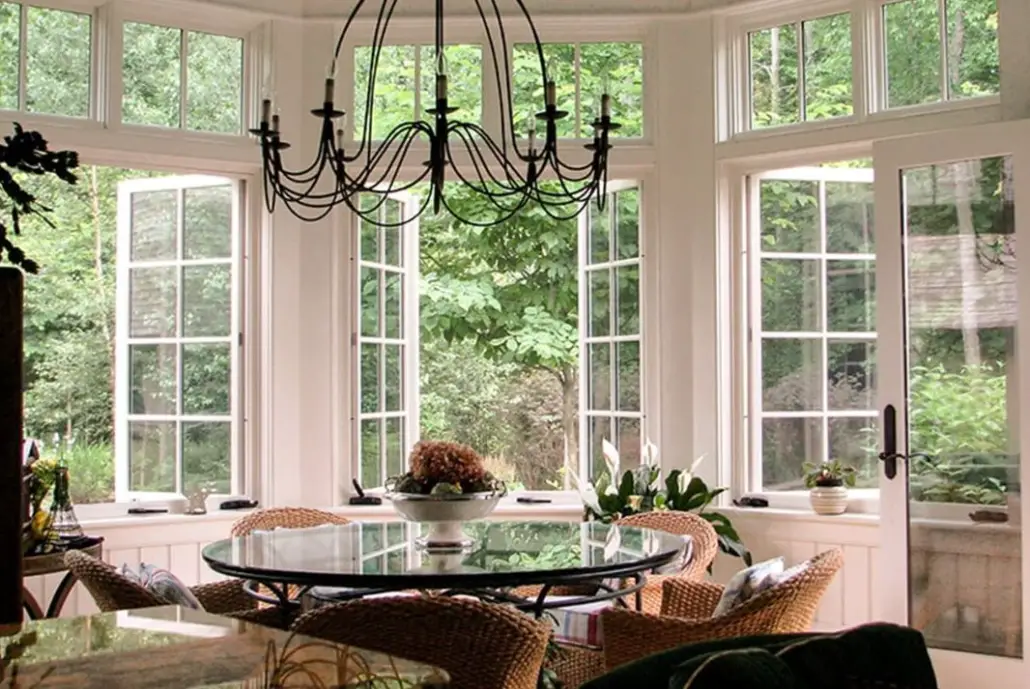
If you’ve been considering replacing your home’s windows and are curious about the advantages of casement windows, you’ve come to the perfect spot.
This one-of-a-kind window style can give your home a whole new look that is warm and inviting, which may be just the thing you need to spruce up your environment.
The question is, what are the advantages and disadvantages of casement windows?
Let’s take a closer look at casement windows to determine what they are, what makes them unique, and whether or not they are a good fit for your home.
What Are Casement Windows?
Casement windows tend to blend into the background of product catalogs, making it possible for you to overlook them.
But this unique window style deserves serious consideration, and it might be a terrific fit for the window replacement project you have planned for all or part of your home.
The ability of a window to slide into an open position distinguishes the casement style from other types.
They can either pivot or hinge, having an opening that can either face in or face out along one of the frame’s vertical sides.
This mechanism functions most frequently from a perpendicular position and at an angle of 90 degrees.
They can be as short as about 24 inches wide and as tall as nearly 70 inches, giving customers a range of options to choose from.
They can only be opened with the assistance of an attached mechanism, such as a handle, crank, or lever that can be swung open from the top, bottom, or sides.
The fact that these can be arranged to look like a single window or together is one of their many attractive features.
How Are Casement Windows Useful?
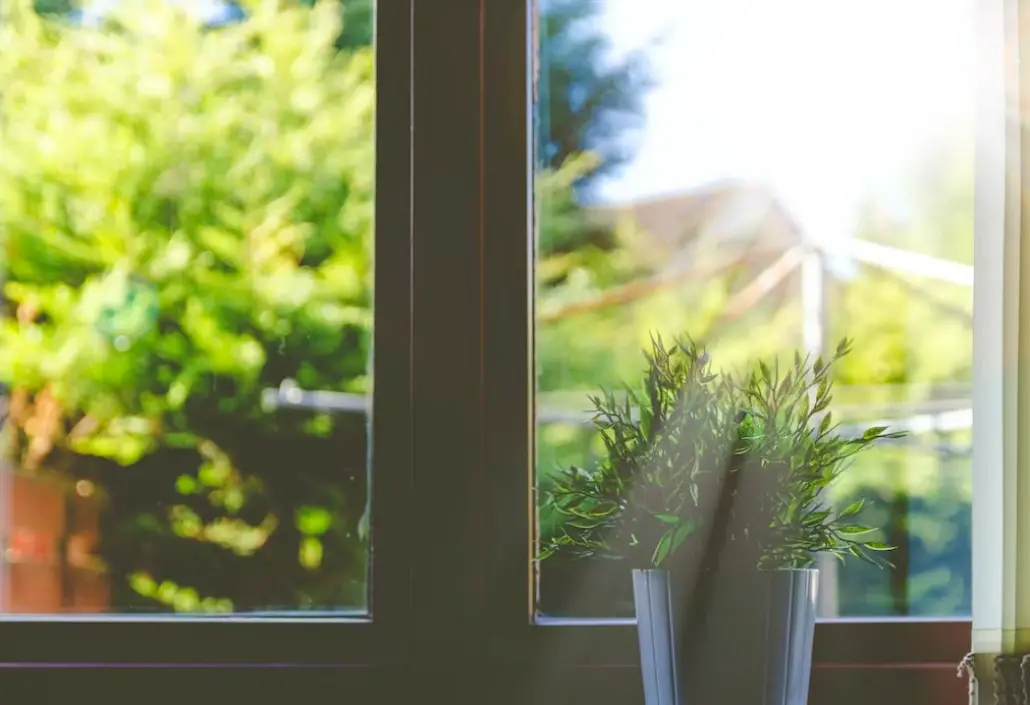
Casement windows were designed for ease of use and convenience.
These types of windows are most commonly used in areas of the home where there is a need for the greatest amount of airflow, such as the kitchen or the bathroom.
They are also commonly installed in areas that make opening and closing the window more challenging such as the sink in a kitchen.
Topics Overview
Casement windows are a practical and effective design that makes opening and closing windows under challenging spaces easy and convenient. Not only are they easy to use, but they also offer a modern look to your home!
How Do Casement Windows Work?
Casement windows are not too difficult to handle. They open and close very similarly to a regular door, thanks to the hinges positioned in such a manner.
Most casement windows feature a crank that may be used to open or close the window. Others, often older models, feature a latch that, once opened, enables you to push the window open and pull it closed with your hands.
What Are the Different Types of Casement Windows?
There are three different kinds of casement windows available on the market, even though all casement windows share the same components. These are as follows:
Single Frame Casement Windows
This is the most common type of casement window. It is a single-framed affair, with wooden slats between the glass panes.
It can swing open either outward or inward, depending on how you want it to be mounted. The advantages of these particular windows include
- Strength: The casement window’s sturdy frame is hinged on the side, making it an excellent choice for a long-lasting solution.
- Airflow: You will have a significant amount of airflow throughout the room in which you install the window due to its ability to open wide.
- Cost-effective: This window is less expensive to install than other casement windows.
Double casement windows
To bring a bit of France into your home, consider installing French casement windows, also called double casement windows, which are made up of two windows hinged on opposite sides.
Your home will have a sophisticated new aspect with these two windows that swing out and meet in the middle.
However, it is essential to note that French casement windows are more expensive to install than single-frame casement windows.
Benefits:
- They are low maintenance.
- Since the sash in a French casement window may extend to 90 degrees, the space outside the window is maximized. With the window fully opened, there are no obstructions to the view. As a bonus, the unobstructed entrance lets in more natural light and fresh air and serves as a means of escape in the event of a fire.
Push-out casement windows
As explained in the name, there are two frames in this window style that can push out. The frames are hinged together on the sides.
This allows you to open each frame to the left and right quickly. Remember that this window has a slightly higher price tag attached to its installation.
The pros of this window include
- Airflow and sunshine: Benefit from fresh air and natural light thanks to this window’s generous proportions.
- Unobstructed views: The clear view is worth the effort of installing and opening this window.
- Minimal maintenance: Very little time or effort is required to keep these windows sparkling.
- Fire exit: In the event of an emergency, the large size of these casement windows makes them a convenient means of egress.
Quick Facts
Size |
17-41 inches |
Height |
2 ft 5.5 inches – 6 ft 5.5 inches |
Width |
16-33 inches |
Cost |
$600-1400 per window |
Pros and Cons of Casement Windows

Pros
Energy-Efficiency
When closed, these windows are the most energy-efficient option. The movable sash of a casement window can be locked tightly against the weatherstripping, preventing much airflow from the outside.
If you live in a windy area, you should get this type of window. As a bonus, they can help you save money on energy costs and make your house more livable in any climate.
Easy Washing
This window style is excellent for rooms that are difficult to access because of their layout.
When opened, most modern casements swivel on their hinges, shifting the entire sash away from the side of the window frame where the hinge is located.
This allows you to clean the window’s exterior inside the house by reaching through to it.
Ventilation
Most other window types can’t compare to the airflow provided by casement windows. Since they swing outward, casement windows are better at letting in natural light, breezes, and fresh air than other window styles.
A casement window allows for a complete opening to the exterior, except for a fixed picture window flanked by two casement windows.
What is so great about casement windows is that you can leave them slightly ajar to let in a light breeze or open them wide to let in a lot of fresh air.
They are so effective that they can even increase ventilation by capturing air currents from the sides of your home as they blow past your outside walls.
Allow For Fire Exits
Casement windows are large enough to function as a rescue opening in bedrooms and lower levels of a home in an emergency.
That means your window needs to be at least 5.7 square feet in area. And 0.5 square meters of clear space if it is on a higher floor.
In addition, casements’ often vertical placement makes for a more functional design. Therefore, meeting the required height of 24 inches (61 cm) and the required breadth of 20 inches (51 cm) is not overly complicated.
Quality Brands In The Market
Companies like Marvin, Simonton, Pella and Andersen wield tremendous influence in this market.
While there are many reputable window manufacturers, we advise researching each brand individually before making a purchase.
We will discuss our top suggestions and provide individualized cost estimates for various window types and manufacturers.
Versatile – Suit Most Homes And Frame Types
Casement windows, whose modern design originated in the Middle Ages, can be found on structures of varying eras.
They enjoyed massive popularity during the Spanish Colonial and English Tudor revivals.
With casement windows, you can give your home a contemporary makeover while keeping a centuries-old design that has stood the test of time.
Offer Unobstructed Views
These panes may stand on their own without the help of grilles or muntins. The lack of obstructions improves natural light and views of the outside.
Two casement windows on either side of a vast picture window create an even more impressive effect. It’s a win-win since you get a great view and better air circulation.
Full Insulation When Sealed
Adequate insulation and energy efficiency are found in fixed pane windows, but casement windows aren’t far behind.
When closed, the sash of a casement window presses against the frame to form a tight seal that removes dust and debris.
Energy efficiency is increased, heat loss is decreased, and costs associated with heating and cooling the home should go down.
Cons
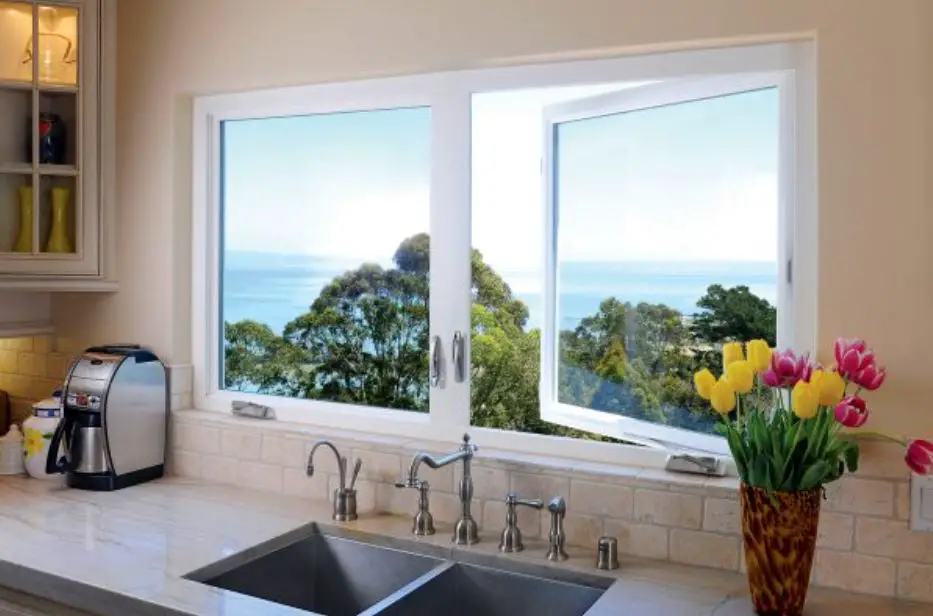
Not Suitable For Wet Conditions
These windows tend to misalign or become broken if left open in high winds or heavy rains and enhance the sound of the wind.
Take Up Extra Space When Open
Casement windows can limit the space on the other side of the window when they are open.
Cost More
This sort of window may cost more than others do. You must have high-quality casement windows if that is what you choose.
Multiple glazed sashes increase the weight of a casement window; thus, the hardware and structure you choose must be sturdy.
May Not Suit Larger Opening Sizes
Even with the most advanced tools and construction methods, size constraints exist. It is essential to know how much space you realistically have access to.
We highly advise getting suggestions from qualified professionals before installing windows.
More Mechanical Parts – Can Break Down Over Time
The various pieces of these windows include hinges, latches, cranks, and more. This means more parts can wear out and break down over time than sliders and picture windows.
What Are The Common Problems With Casement Windows?
Casement Window Will Not Close All the Way
There are a few potential causes for this widespread problem. The hinge arms may be binding, jammed, or broken.
There could be dirt or debris attached to the exterior of the casement sash, making it difficult to close. Make sure the window can complete by checking the lock to see if it is locked.
Casement Window Stuck Shut
Casement windows are distinguished from other types of opening windows by their hinged sash. A common reason casement windows are difficult to open rusty hinges.
Unmaintained, old hinges can rust and become clogged with dirt and debris. If the problem persists after trying anti-rust sprays, it may be time to replace the window or its hardware. Casement windows with cranks can experience the same pain.
If your window is stuck or has holes that enable heat to escape, your home’s energy efficiency will suffer, and you will need to get a new window (or windows) before winter.
Casement windows can also become frozen due to extreme weather conditions. Wood and vinyl should be avoided, which expand, bow, or flex permanently in response to temperature changes.
Broken Casement Window Crank
Modern casement windows have a crank attached to the frame for easy opening and closing. The casement window crank may become inoperable at some point.
There are several possible causes for this. It’s possible for the gears within to lose their hold on the gear mechanism and the crank handle to be stripped.
The gears can become stripped if they aren’t oiled regularly. Further, the gear mechanism might get stuck or break down if dirt and rust build up over time.
The solution is to maintain the windows using the prescribed lubricant periodically.
If the gears are already stripped, it is recommended that you get them repaired by a professional window installer.
Sagging Window Hinges
Depending on the design of the window, the casement sash may be somewhat bulky and heavy. Because of this, the frame may bow or warp, or the hinges may break and need to be replaced.
It would be best to use hardware that can handle the sash’s weight, but remember that even the most excellent hardware will eventually wear out.
Casement Window Lock Problems
Problems with a casement sash’s locking mechanism are typically caused by something else, like sagging hinges or warped frames, as mentioned previously, which prevent the lock pieces from aligning properly.
However, if the locks aren’t regularly oiled, they may become stuck, and they can also bend or break with time.
If you cannot remedy the malfunctioning locking mechanism on your window, a professional window repair service should be called sooner rather than later.
Damaged weatherstripping
Worn weatherstripping is another widespread problem with casement windows. The weatherstripping on windows might get pulled or compressed more regularly than on other windows because windows get opened more often.
It is possible for the weatherstripping to be torn when the window is opened while it is chilly or after it has been closed for a long time.
Framing materials like fiberglass and wood might break after being subjected to severe temperatures for an extended period.
Due to this, problems like drafts and moisture seepage are possible. If your windows are as energy-efficient as possible, you should replace any worn weatherstripping immediately.
Casement Windows vs. Their Competition
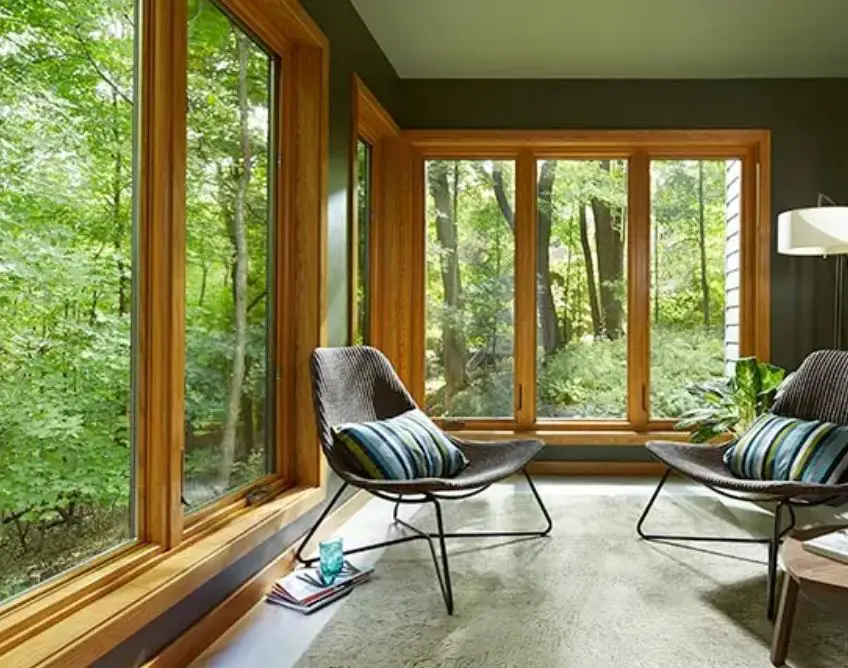 Slider, double-hung, single-hung, and fixed windows are all standard options when searching for either new or replacement windows for your home.
Slider, double-hung, single-hung, and fixed windows are all standard options when searching for either new or replacement windows for your home.
Now that we have thoroughly gone through the pros and cons of casement windows let’s look at the other options.
Casement Windows vs. Double Hung
There are a few things to note when comparing casement windows to double-hung windows.
Casement windows are more energy efficient than double-hung windows because they don’t need a track to slide on.
Because of this, the air has more opportunities to find its way in or out of your home. Many homeowners install weather stripping to improve the seal and make it tighter.
Some top-of-the-line casement windows can cost as much as two times that of a double-hung window.
The main reason for the extra cost is the more complex mechanics of the casement window. Double-hung windows can be more efficient by installing weather sealing and window film.
Casement Windows vs. Sliders
One must consider the energy-saving qualities of windows while making a purchase. The sash of a casement window fits very securely into the frame.
Therefore air leakage is significantly reduced. Due to the need for a flexible seal at the top and bottom of the window’s runners, sliding windows can never achieve the same level of airtightness as casements.
If you’re concerned about your windows’ safety, you should consider upgrading to either triple or laminated glass. Both types of windows are secure from a safety perspective.
Just remember that someone who wants to break into your house may easily do so by shattering a window.
Casement Windows vs. Awning Windows
Awning windows and vinyl casement windows open with a hand crank, but in different ways. The awning window doesn’t allow for a lot of air circulation.
Since a casement window’s opening mechanism creates a partition in the middle of this area, they are an excellent option for use as egress windows in bedrooms.
This is particularly something that should be considered before deciding on a particular window style.
Casement Windows vs. Sash
When comparing the energy efficiency of new windows, casement windows win out over sash windows every time.
The greater heating and cooling bills that arise from air leakage via sash windows result from their design flaws. When everything fits together snugly, there shouldn’t be any places for air to sneak out.
Casement Windows vs. Tilt And Turn
Both windows are advantageous; deciding between them boils down to practical considerations. Tilt-and-turn windows are a great alternative to fully opening casement windows if you have young children.
If you’re searching for a versatile window design that offers an outward opening to permit optimal ventilation, then a casement window would be the right choice for you.
Are Casement Windows Worth Buying?
Casement windows, like any windows, require maintenance to function correctly. The trick is to anticipate problems and learn how to address them before they escalate!
While this type of window may require more upkeep than others, the advantages usually outweigh the drawbacks.
Who Should Buy Casement Windows?
Casement windows are the best option if you want plenty of airflow into your home through simple-to-operate windows, don’t mind spending a little extra for your ideal circumstance, and have the correct sizing.
However, you may prefer a different window option for your home if you are on a tighter budget or need to repair large windows.
Casement Window FAQS

Q: How Long Can A Casement Window Be?
In Canada, the minimum dimension for a casement window is 14.25 inches wide by 18 inches high if it is double or triple-glazed.
Double-paned casement windows are available in maximum size of 38 inches wide by 78 inches high. Triple-paned casement windows have a similar total length of 37 by 78 inches.
Q: Do casement windows break easily?
Compared to other windows, casement windows are generally more difficult to break and break into.
Q: How far open do casement windows open?
The crank windows open to an angle between 0 and 90 degrees. Casement windows can open up to 90 degrees and sometimes even more without a crank.
Q: Can casement windows have screens?
Yes, they can. Window screens are often installed on the window’s interior, where they are safer from the weather.
Q: Which way should the casement open?
Casements typically swing outward from a side hinge when placed in an exterior wall. Hinge placement is another matter that homeowners tend to decide based on which hand they use most frequently.
Q: How thick are casement windows?
- Laminated sash components increase the already substantial standard sash thickness of 2 3/16 inches (56 millimeters).
- All insulated glass modules come standard at 3/4″ (19mm) thick with a 1/2″ (13mm) air gap, but custom sizes are also available.
Q: How wide is a casement window?
Standard casement window widths can be as small as 17 inches and as large as 41 inches. Heights between 16 and 33 inches are relatively typical.
Conclusion
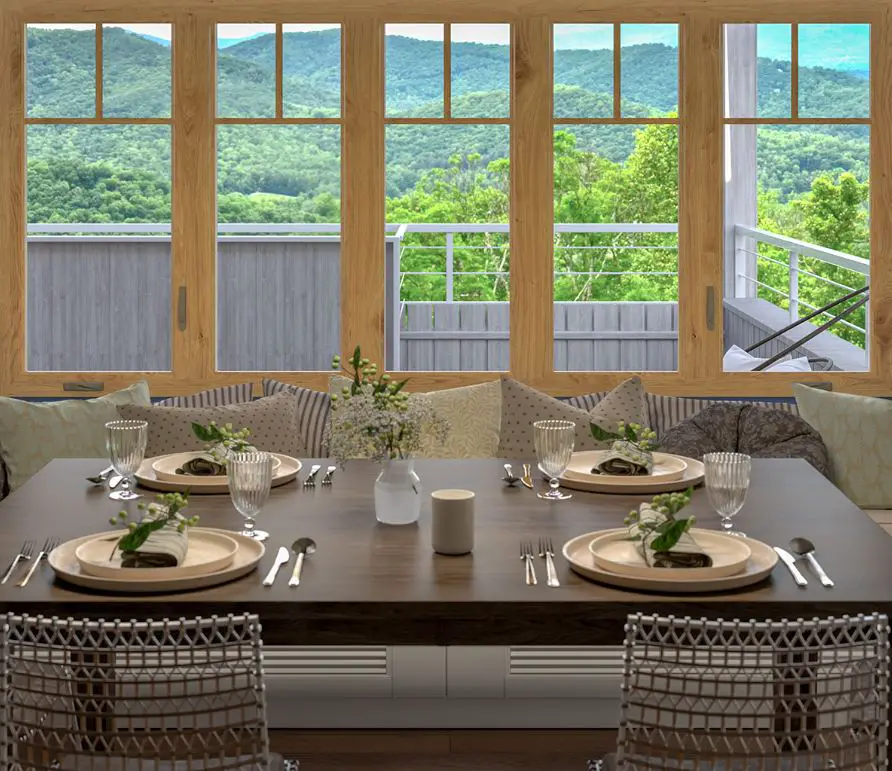
Considering casement windows is a smart move, whether you’re building a new house or replacing aging windows.
However, there are a few drawbacks that should not be ignored.
One of the more essential factors to consider before installing casement windows is to determine whether or not your location is suitable for wind and airflow management and whether or not your intended use for them coincides with that use.
Then, to maximize their usefulness, you need to have them set up correctly.
Otherwise, you may have the best of both worlds with casement windows: modern convenience and time-tested style.


